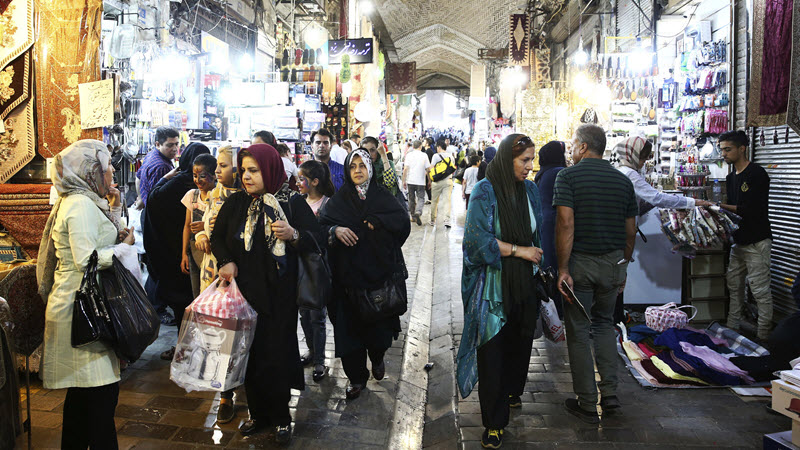
by Staff writer, SF
The Islamic Republic will be one of the most powerful economies in the world in the next five decades according to Iran’s Supreme Leader Ali Khamenei. The county’s leaders continue to deny the looming economic crisis. In an apparent attempt to project power and economic stability to the rest of the world, Iranian President Hassan Rouhani has stated that Iran could become one of the top 10 economies in the world over the next three decades.
But, the truth is, the Iranian regime has created the worst economic crisis that the nation has faced in many decades. According to the International Monetary Fund, Iran is officially in a recession, with its national currency, the rial, having dropped to historic lows. Last year, one US dollar equaled approximately 35,000 rial, and is now worth nearly 150,000.
While most of Iran’s young people are well educated, almost 30 percent of them cannot find jobs. The unemployment rate is over 60 percent in some provinces. “Forty-two percent of unemployed people in Iran have a university degree, and huge sums of money have been spent on their education,” said an official representative of the regime’s Planning and Management Organization. Educated women have an even harder time finding work, and their unemployment rate is near 80 percent in some provinces, and approximately 70 percent in others.
At least 40 percent of the population — approximately 32 million citizens — live below the poverty line. Many cities are experiencing food shortages that are a direct result of corruption and economic mismanagement. The population of Sistan and Baluchistan provinces lack drinking water. The people of Iran are facing an unprecedented health crisis.
Dr. Majid Rafizadeh, Harvard-educated Iranian-American political scientist, and leading expert on Iran and US foreign policy, as well as the president of the International American Council writes, “The main underlying problems lie in the fact that Iran’s large wealth is not being redistributed among the nation. Instead, it has been monopolized by the theocratic establishment and spent on financing terror and militia groups.”
Salaries have generally remained the same, but the price of commodities, food, housing and rent have increased. It has become difficult for people to afford basic necessities. At the same time, inflation has risen. Inflation was 7.9 In April, but by September it had rocketed to 31.4 percent.
Living expenses for one person is roughly $6,500 a year in Iran, but according to Iran’s official figures the average salary of an Iranian family is only around $1,900 dollars a year. This is why the people are revolting against the regime. They chant:
“Reformists, hard-liners, the game is over now”, or “Leave Syria alone, think about us instead”, as well as “Death to Hezbollah”, and “Forget Gaza, forget Lebanon, I’d give my life for Iran.” Protests have become regular occurrences as the economy spirals. Iran’s teachers truck drivers, merchants, traders. and shopkeepers in Tehran’s Grand Bazaar have banded together in a nationwide strike over poor economic conditions.
Iran has approximately $27.3 trillion in natural resources and is the 18th-largest country in the world. When ranked by purchasing power parity, Iran is considered one of the globe’s richest countries. It has the world’s second and fourth-largest gas and oil reserves.
But the nation’s large wealth is not being redistributed to the people. “It is being spent on financing terror and militia groups, pursuing military adventurism in the region, boosting the power of the Islamic Revolutionary Guard Corps (IRGC) and further enriching the ruling politicians. It is worth noting that Khamenei’s financial empire is currently proven to be worth at least $95 billion,” writes Dr. Rafizadeh, who adds, “As long as the mullahs and the IRGC rule over Iran with an iron fist, the Iranian people’s economic conditions will most likely continue to deteriorate.”







